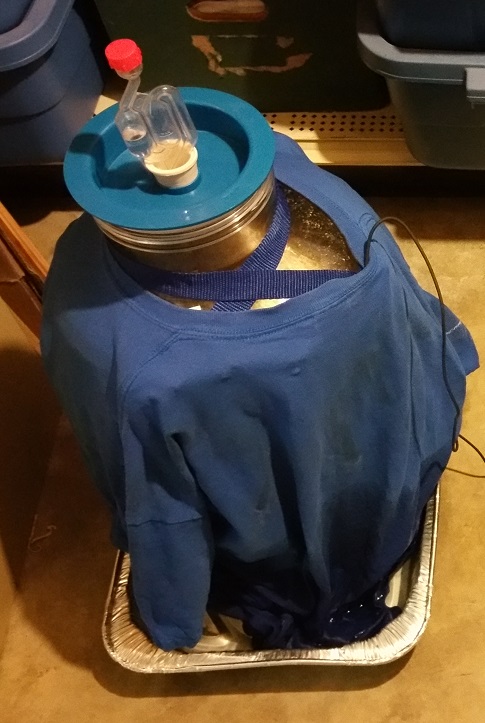Hello everyone! I am doing my first batch this Saturday and I feel ready. I have read and re-read my directions. I have reached out to buddies who are home brewers and received some advice. I just want to use this forum to field advice or tips. I have just one question for now:
- How much wiggle room do I have in temperature variation in the fermentation space? I bought a thermometer for my unused basement bathroom and it reads between 63 and 71. I have messed with the heat register for that space to try and keep it somewhat consistent. I’ve heard 65-70 is ideal for an ale. Thoughts?
Any and all advice is helpful! Thank you.
Something I don't see mentioned a lot is how much heat the fermentation alone produces.
If you work with a wort and ambient temperature of 70F, the fermentation temperature can go as high as 80F.
Pitch when it's day time(when the room is warmest) to make sure the yeast wakes up when it's getting cold to produce less off-flavors. Keep in mind the warmer you pitch, the less lag time there will be. If the yeast wakes up when it's 60F, the majority of fermentation will probably happen around 65F.
60F-80F range won't produce anything undrinkable. 65F is a good spot, unless you are working with a Belgian strain.
If you decide to ferment cold, do a diacetyl rest when the fermentation is about 75% done. If you ferment around 65F-70F, you don't need to do this.
Off-flavors are produced during the fermentation stage and fermentation slows down as time goes on. If your temperatures are good during the first two days, you can stop worrying. Even if it gets too cold or too hot, it won't be too bad.
A swamp cooler is the most effective DIY cooling solution you can do. Just a cold wet towel and a fan.
If you are using dry yeast, re-hydrate in a cup of water first. The temperature of this water should be the same as your wort. If you don't nothing bad will happen, this just increases the viability of the yeast.
Don't open your fermenter unless you have a good reason to, like dry hopping.
Gelatin is the cheapest and easiest way to get a clear looking product, it will be useful.



 my first mr beer attempt was ruined do to laziness with sanitizer
my first mr beer attempt was ruined do to laziness with sanitizer
